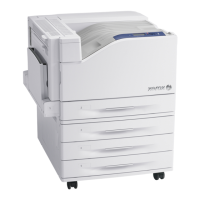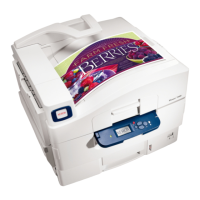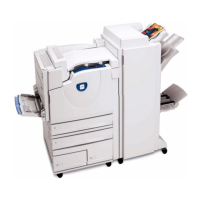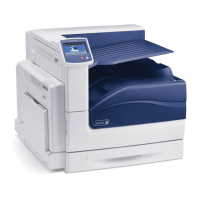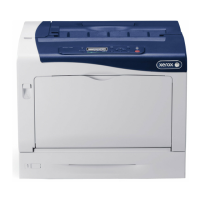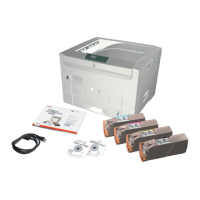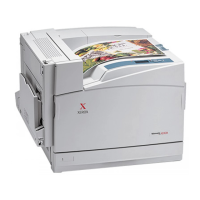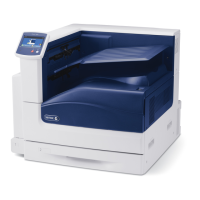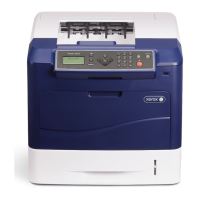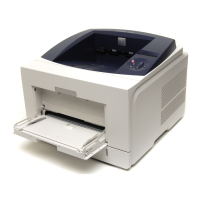4-4 Phaser 7500 Printer Service Manual
General Troubleshooting
Power On Self Test (POST)
POST diagnostics provide a quick means of isolating a defective subsystem
associated with the Image Processor Board and SDRAM. There are two kinds of
POST faults: soft and hard. A soft fault is any fault that allows the operating
system to initialize. Soft faults do not stop printer operation and are reported on
the Startup page after the system is running. A hard fault prevents the operating
system from initializing stopping further printer operation. Hard faults are
indicated with blinking LEDs and the failed test appearing on the display.
The following tests execute when the printer is powered on after the Boot Loader
runs, and before the operating system is loaded and initialized. Bypass POST by
pressing the OK button at power on until the splash screen displays.
POST Test Descriptions
Test No. Te st Name Fault Code (Hard, Soft) Description
1 DDR2 SDRAM H: 1 (Special) Boot loader tests this.
DDR2 type RAM
14 Real Time
Clock
S: 14 (POST_DEV_RTC) Test performed.
3I/O ASIC H: 3 No test performed.
4 Memory H: 4 No test performed.
5 Configuration
Chip
N/A No test performed.
This is redundant and
of no additional value.
Postscript is perfectly
capable of alerting the
user to a Configuration
Chip issue.
If Postscript reports a
problem with the
Configuration Chip,
examine the socket for
damage, reseat the
Configuration Chip and
power cycle the printer.
10 EEPROM H: 10 Test performed.
11 Ethernet H: 11 (POST_DEV_ETH) Test performed.
12 CPU Interrupts H: 12 Test performed.
13 USB S: 13 (POST_DEV_USB) No test performed.
Limited value. The
ability to perform I/O is
what matters to an
end-user. This test never
did any I/O check.
In customer mode,
simply print via USB.
14 Real Time
Clock
S: 14 (POST_DEV_RTC)
15 RAM DIMM S: 15 (POST_DEV_DIMM) No test performed. No
added value.
